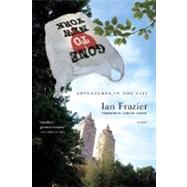
Note: Supplemental materials are not guaranteed with Rental or Used book purchases.
Purchase Benefits
What is included with this book?
| Foreword by Jamaica Kincaid | ix | ||
| Antipodes | 3 | (4) | |
| Rental | 7 | (4) | |
| Cops | 11 | (6) | |
| Canal Street | 17 | (36) | |
| Bumpin'n | 53 | (4) | |
| Friend of the Building | 57 | (4) | |
| Bags in Trees | 61 | (4) | |
| To Mr. Winslow | 65 | (4) | |
| Bags in Trees II | 69 | (4) | |
| On the Floor | 73 | (4) | |
| Summer Rules | 77 | (4) | |
| Street Scene | 81 | (4) | |
| In the Stacks | 85 | (4) | |
| Take the F | 89 | (12) | |
| All That Glitter | 101 | (4) | |
| Someplace in Queens | 105 | (14) | |
| Typewriter Man | 119 | (22) | |
| Sink or Swim | 141 | (4) | |
| The Mornings After | 145 | (6) | |
| Bags in Trees: A Retrospective | 151 | (16) | |
| Route 3 | 167 | (18) | |
| Out of Ohio | 185 |
The New copy of this book will include any supplemental materials advertised. Please check the title of the book to determine if it should include any access cards, study guides, lab manuals, CDs, etc.
The Used, Rental and eBook copies of this book are not guaranteed to include any supplemental materials. Typically, only the book itself is included. This is true even if the title states it includes any access cards, study guides, lab manuals, CDs, etc.